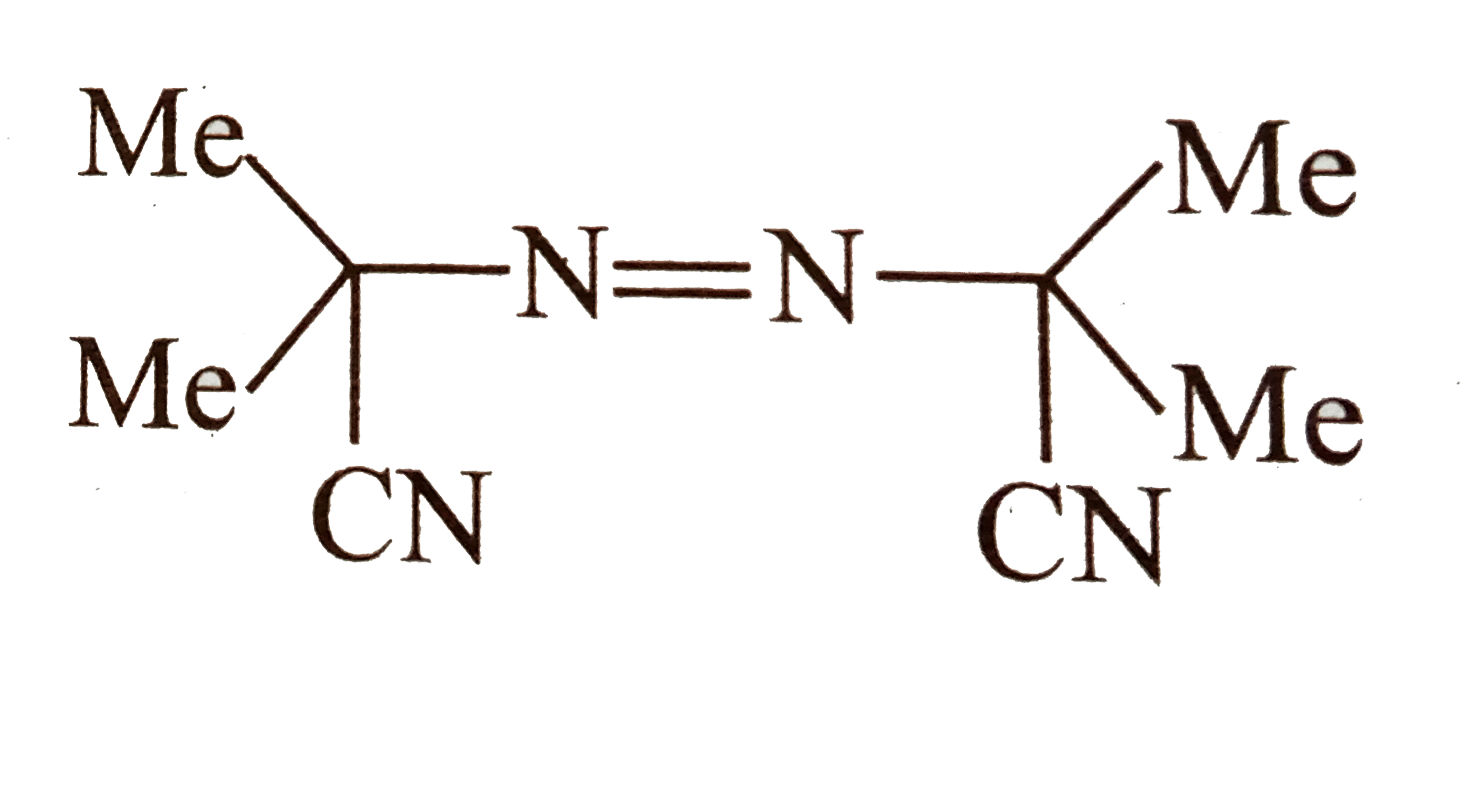Chlorination of CH4 in sunlight involves
Homolytic cleavage
Heterolytic cleavage
Carbocation
carbanion
The correct Answer is:A
Step-by-Step Solution:
1. Understanding the Reaction: The chlorination of methane (CH₄) in the presence of sunlight is a free radical substitution reaction. This process involves the substitution of one hydrogen atom in methane with a chlorine atom.
2. Initiation Step: The reaction begins with the initiation step, where chlorine molecules (Cl₂) undergo homolytic cleavage due to the energy provided by sunlight (HNU). This results in the formation of two chlorine radicals (Cl•):
Cl2sunlight−−−−→2Cl∙
3. Propagation Steps: The chlorine radical (Cl•) then reacts with methane (CH₄) in a propagation step. The chlorine radical abstracts a hydrogen atom from methane, forming chloromethane (CH₃Cl) and a methyl radical (CH₃•):
Cl∙+CH4→CH3Cl+H∙
The methyl radical (CH₃•) is also a reactive species and can further react with another chlorine molecule:
CH3∙+Cl2→CH3Cl+Cl∙
This process continues, leading to the formation of more chloromethane and chlorine radicals.
4. Termination Step: Eventually, the reaction will reach a termination step where two radicals combine to form a stable product, thus stopping the reaction. For example:
CH3∙+CH3∙→C2H6
or
Cl∙+Cl∙→Cl2
5. Conclusion: The chlorination of CH₄ in sunlight primarily involves homolytic cleavage, as the chlorine bond breaks to form radicals. Heterolytic cleavage, carbocations, and carbanions are not involved in this reaction.
Final Answer: The chlorination of CH₄ in sunlight involves homolytic cleavage.
---
Cl2sunlight−−−−→2Cl∙
Cl∙+CH4→CH3Cl+H∙
The methyl radical (CH₃•) is also a reactive species and can further react with another chlorine molecule:
CH3∙+Cl2→CH3Cl+Cl∙
This process continues, leading to the formation of more chloromethane and chlorine radicals.
CH3∙+CH3∙→C2H6
or
Cl∙+Cl∙→Cl2
Topper's Solved these Questions
- BOOK - NARAYNACHAPTER - HALOALKANE AND HALOARENESEXERCISE - EXERCISE - II (H.W)28videos
HALOALKANE AND HALOARENES
- BOOK - NARAYNACHAPTER - HALOALKANE AND HALOARENESEXERCISE - EXERCISE - 337videos
HALOALKANE AND HALOARENES
- BOOK - NARAYNACHAPTER - HALOALKANE AND HALOARENESEXERCISE - EXERCISE - I (H.W)33videos
HALOALKANE AND HALOARENES
- BOOK - NARAYNACHAPTER - F-BLOCK ELEMENTSEXERCISE - CHECK YOUR GRASP2videos
F-BLOCK ELEMENTS
- BOOK - NARAYNACHAPTER - HALOGEN COMPOUNDSEXERCISE - Passage 131videos
HALOGEN COMPOUNDS
Similar Questions
Knowledge Check
- Question 1 - Select One
Assertion : CH4 does not react Cl2 in dark.
Reason: Chlorination of CH4 takes place in sunlight.AIf both assertion and reason are true and the reason is the correct explanation of the assertionBIf both assertion and reason are true but reason is not the correct explanation of the assertionCif assertion is true but reason is falseDIf the assertion and reason both are false - Question 2 - Select One
Assertion : CH4 does not react Cl2 in dark.
Reason: Chlorination of CH4 takes place in sunlight.AIf both assertion and reason are true and the reason is the correct explanation of the assertion.BIf both assertion and reason are true but reason is not the correct explanation of the assertion.CIf assertion is true but reason is false.DIf assertion is false but reason is true. - Question 3 - Select One
Chlorination of CH4 involves following steps :
(i) Cl2→2.Cl
(ii) CH4+.Cl→.CH3+HCl
(iii) .CH3+.Cl→CH3Cl
Which of the following is rate determining ?AStep (i)BStep (ii)CStep (iii)DStep (ii) & (iii) both
Chlorination of an alkane involves the attack of
View SolutionIn the reaction of Cl2 on CH4 in sunlight, which of the following compound is not formed
View SolutionThe chlorination of an alkane involves:
View SolutionWhich of the following is not formed by the reaction of Cl2 on CH4 in sunlight
View SolutionWhich of the following is NOT formed by the reaction of Cl2 on CH4 in sunlight ?
View Solution


